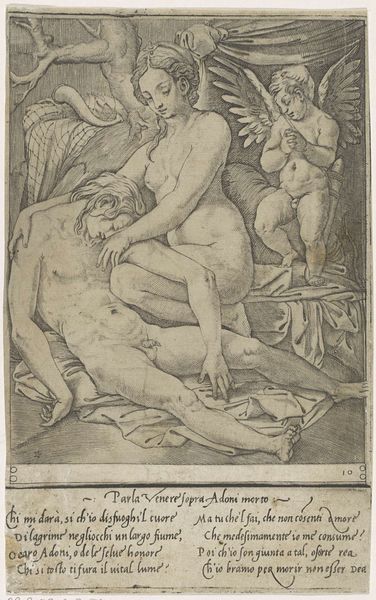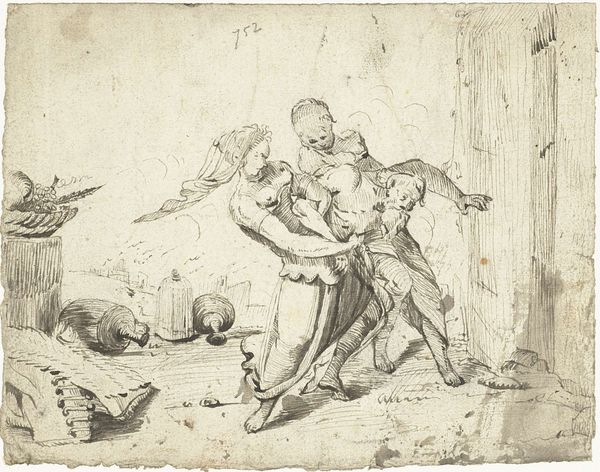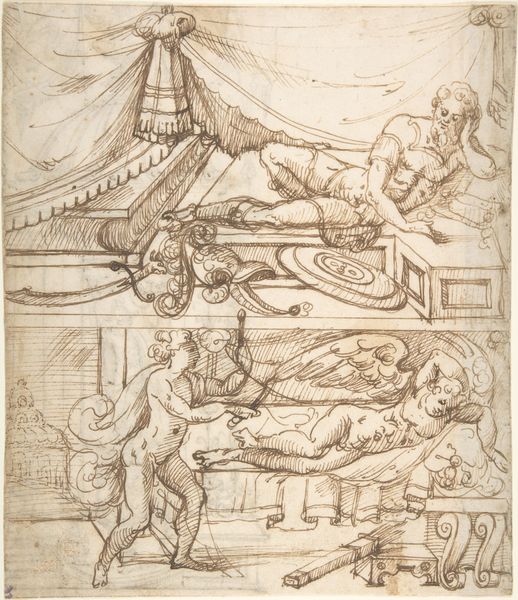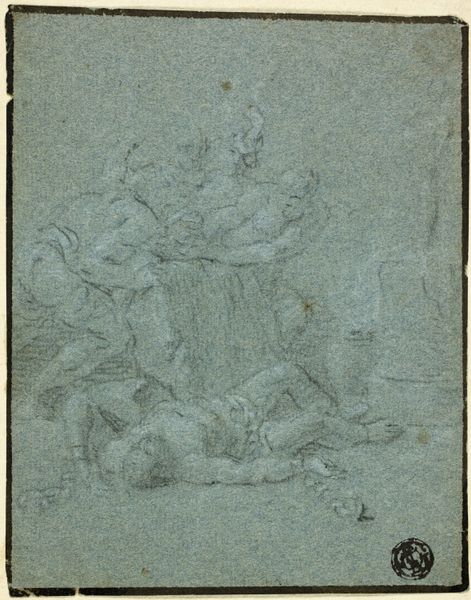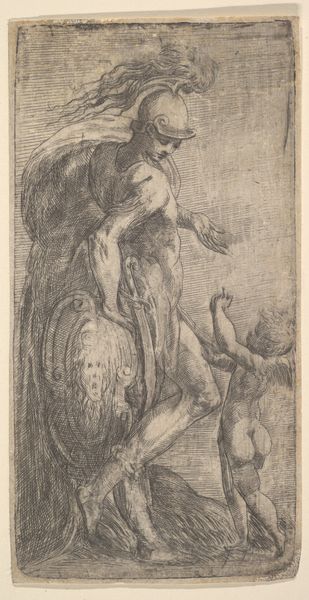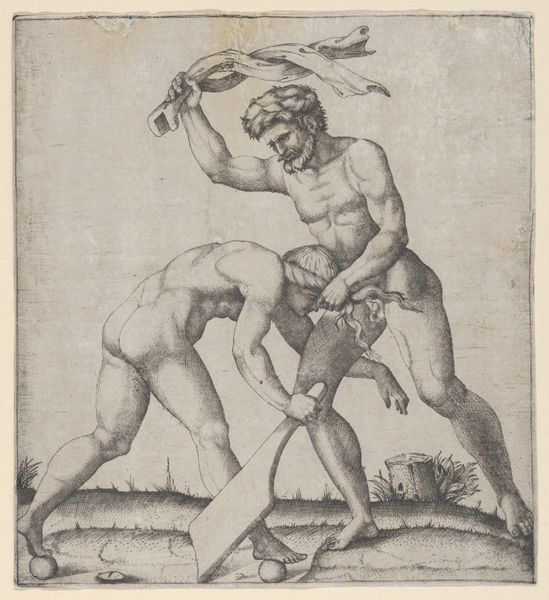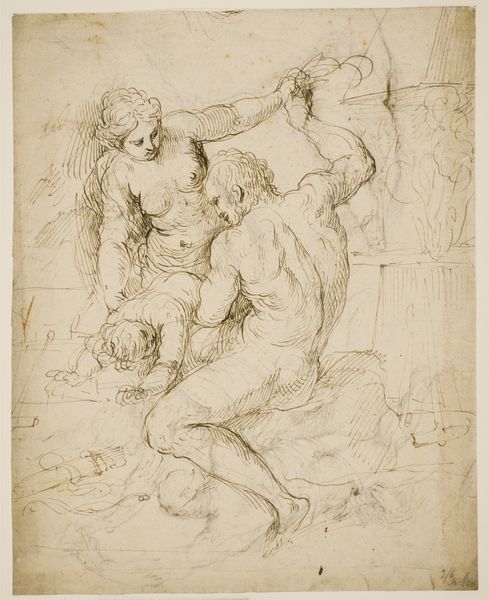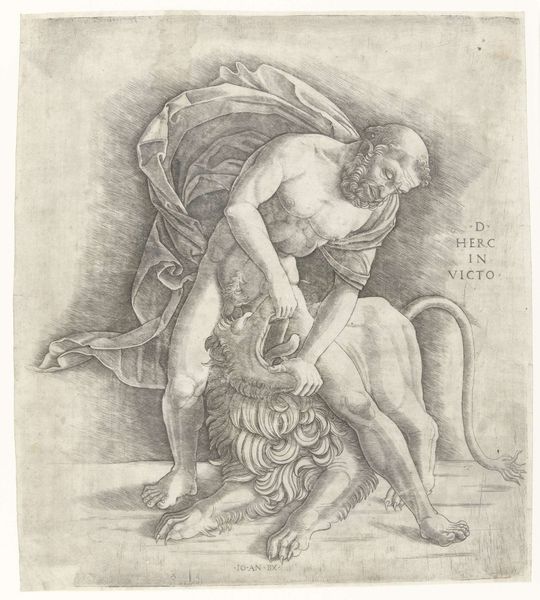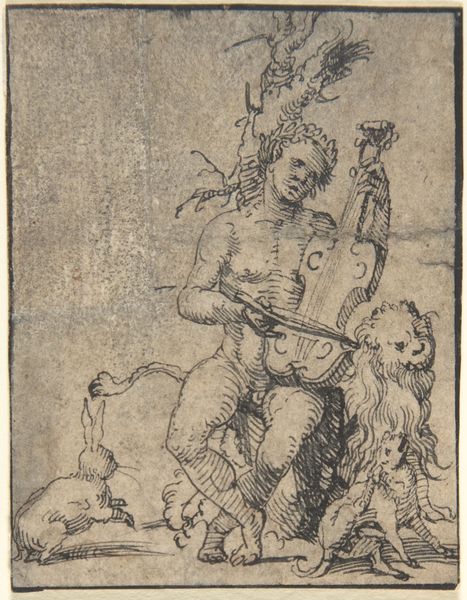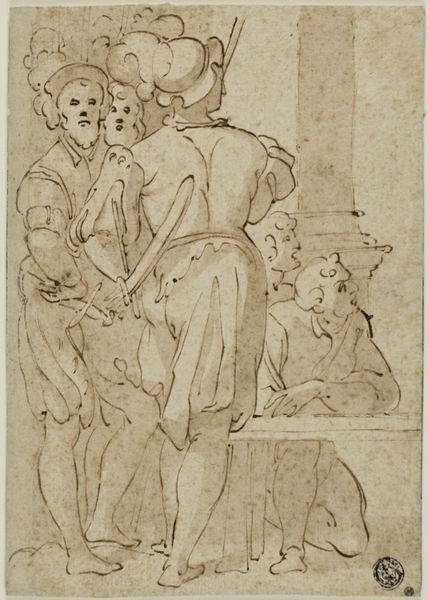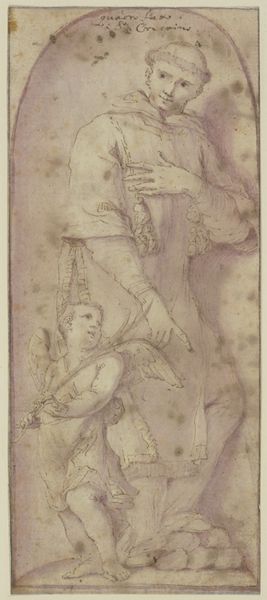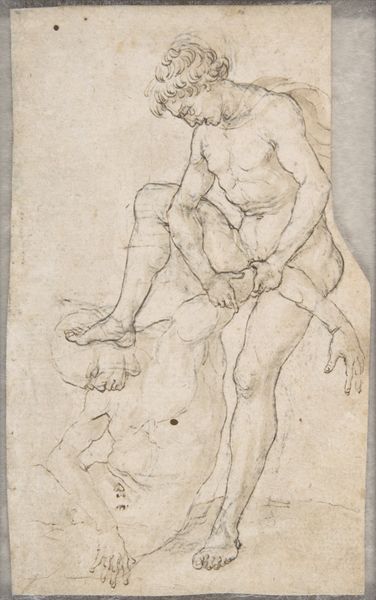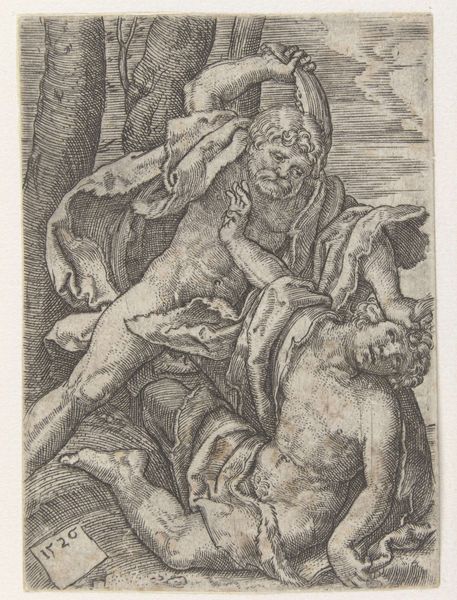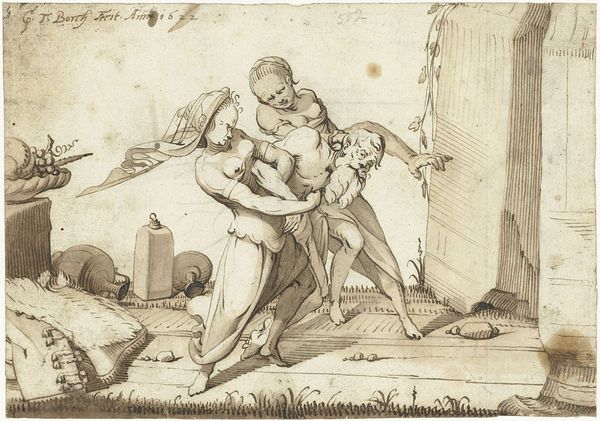
drawing, ink, pen
#
drawing
#
narrative-art
#
baroque
#
pencil sketch
#
figuration
#
ink
#
pen
#
history-painting
Dimensions: height 102 mm, width 87 mm
Copyright: Rijks Museum: Open Domain
Editor: Here we have Gerard ter Borch's "Kaïn verslaat Abel," made around 1640 using pen, ink, and pencil. It depicts the biblical story of Cain slaying Abel. The medium seems stark and almost brutal given the narrative. How can we approach an understanding of this piece? Curator: Let’s look at the means of production: pen, ink, pencil - materials readily available, accessible. Was ter Borch commenting on the accessibility of violence itself through his choice of everyday materials? It's a challenge to notions of ‘high art’ being separate from everyday existence. Consider, also, the labor involved. What repetitive gestures, what bodily stress and capabilities did this piece demand? Editor: So, you are suggesting the very act of creating the artwork—the labor involved—might be a commentary? Curator: Precisely! Ter Borch's choice and handling of these ordinary materials elevates the commonness and workaday quality, while depicting a grave theme, drawing a relationship between process, material and social context. Does that material choice amplify or challenge the dramatic narrative? Editor: I suppose it grounds the biblical story in a sort of reality. Like, this event, as horrific as it is, can be represented with common materials, thereby made common to us all. It seems almost too simple and plain to carry so much gravity, so I read it differently now, thanks. Curator: Yes. And consider who had access to these materials, the social and economic implications of artistic production during the Baroque era. This work can also invite dialogue concerning production. Whose stories get told through easily obtainable media, and who is excluded from that visual narrative production? Editor: Interesting. Thinking about the art supplies as a form of accessible production changes my perception of the artwork and the period it was created in. I would not have considered how simple materials add to such a layered message of common experience and exclusion. Curator: Exactly! By analyzing process, we uncover those crucial socio-economic underpinnings that shape both art and the society from which it emerges.
Comments
No comments
Be the first to comment and join the conversation on the ultimate creative platform.
